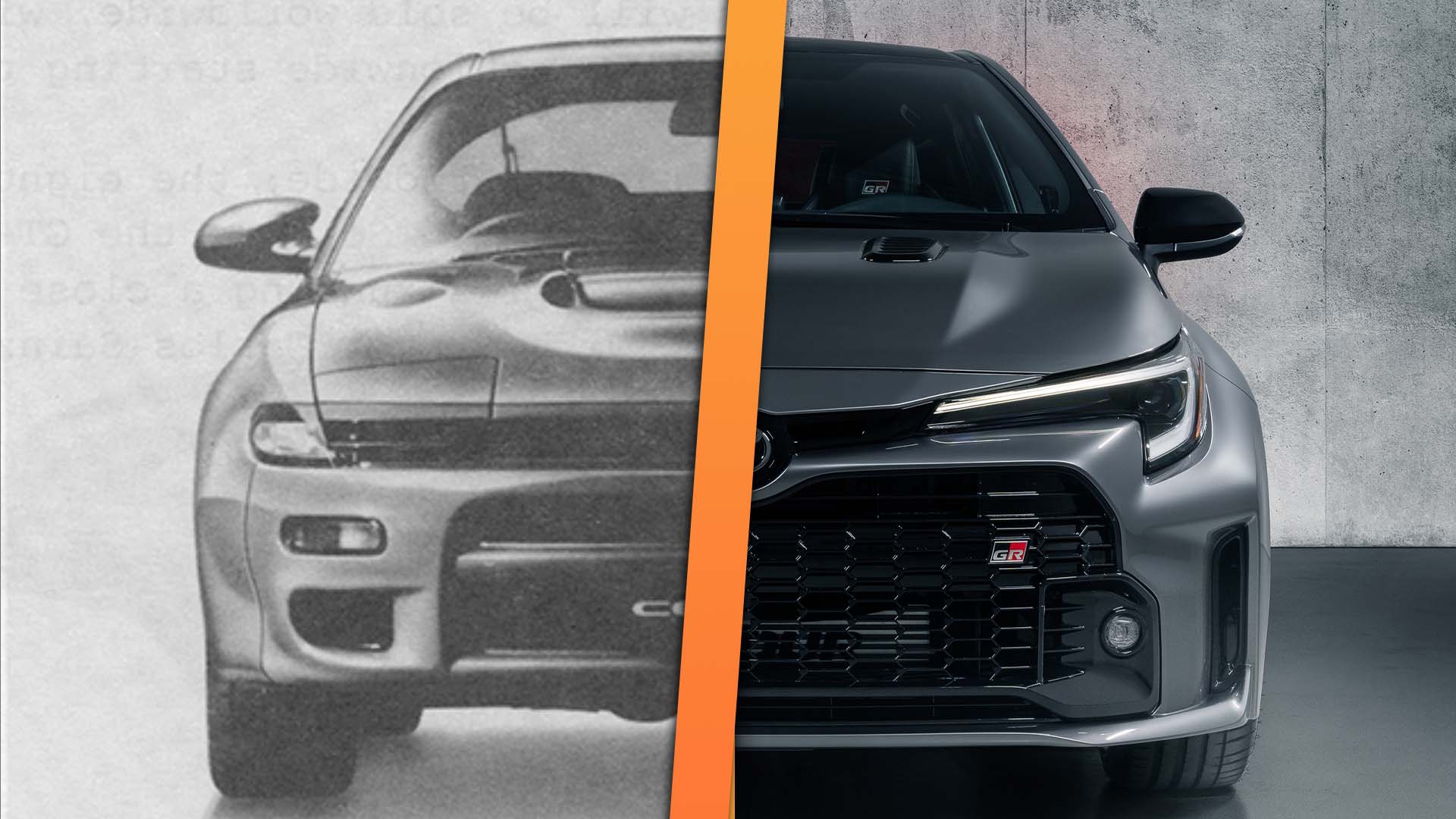

The 2023 Toyota GR Corolla is a landmark Toyota performance car for almost innumerable reasons. Not only is it one hell of a consolation prize for not getting the GR Yaris, it’s also the first purpose-built, in-house Toyota performance car sold in the United States since the 2000s’ MR2 Spyder. It’s been even longer since we’ve gotten quick Toyota with all-wheel drive, which we haven’t seen since the 1993 Celica All-Trac Turbo, known to most of the world as the GT-Four—the perpetrator of arguably the greatest rally cheating scandal in history.
The Toyota Celica was a rally car almost from birth, being introduced in December 1970 and raced in the World Rally Championship in 1972. It took a decade to find its footing, seizing its first overall victory in 1982, before beating out Group B legends to take three straight Safari Rally wins from 1984 through 1986, despite having only rear-wheel drive.

But Celicas didn’t really hit their stride until the Group A era, when Toyota added its full-time four-wheel-drive system GT-Four (All-Trac in the States) and a brawny early turbo-four called the 3S-GTE. Shared with the MR2 Turbo, the Yamaha-influenced 2.0-liter was one of the first seriously tunable four-bangers, and a racing-bred relative called the 503E powered a multitude of Toyota’s most dominant race cars. Toyota’s WRC cars, though, were powered by the road-legal 3S, which propelled the four-wheel-drive Celica ST165 to its first WRC win in 1989, and Carlos Sainz Sr. to a WRC drivers’ title in 1990.

Lancia won that year’s constructor title, as well as the subsequent two, but Sainz seized a second driver’s title in 1992 in the new ST185. The improved Celica proceeded to dominate in 1993 and 1994, winning both titles for Toyota, before being replaced again by the ST205 in 1995. That year was less successful for Toyota, but not for lack of effort, as that’s the year Toyota was caught committing what’s widely considered the cleverest case of motorsport cheating in history. In short, the turbo’s restrictor plate was designed to open up during installation, giving Toyota a power advantage speculated to be as great as 50 horsepower.

The advantage didn’t seem to do much for Toyota, which won only one rally in 1995 before the mechanism was discovered late that season, in circumstances that remain mysterious to this day. This earned Toyota a one-year ban from the WRC, a punishment that rather than disgrace Toyota only cemented its legacy.



Today, Toyota still competes in the WRC, now with the Yaris—which required Toyota to build homologation cars, spawning the GR Yaris. As the GR Corolla gets its drivetrain from the GR Yaris, it can be considered a relative of Toyota’s modern rally cars, and claim to be blood with the Celica GT-Four. And with a similarly tunable engine and an up to 70 percent rear torque split, the GR Corolla can more than back that claim.
Everyone’s chomping at the bit to drive one, especially knowing it comes with a manual handbrake to complement that rear-drive bias. What I’m getting at is, the new GR Corolla is undoubtedly a hot ticket item, and for fans of slinging gravel, Toyota looks better than it has since the last millennium.



Got a tip or question for the author? You can reach them here: james@thedrive.com